In Florida, the hot, humid climate makes growing banana tree in Florida and delicious tropical bananas at home easy, and many people wonder how to grow them where they aren’t native. A banana loves warmth, and trees thrive with abundant heat and moisture, which they require along with suitable temperatures year-round for ideal results in this environment.
For warmth-loving plants to flourish, keep the root zone moist in nutrient-rich soil, give ample sunshine, and provide space and air circulation with consistent protection from wind. A long season with generous rainfall helps homegrown bananas reach their full potential when cared for properly, and they reward you with lush, broad leaves, sweet fruit, and a fast-growing plant that makes a vibrant statement in any landscape—use this quick guide of site conditions, simple care, and practical tips to keep them happy.
How to grow bananas in Florida: Complete Guide
Selecting the Best Site for Planting Bananas
When I first started growing banana trees in Florida, I quickly learned how important the right conditions are if you want them to grow strong and healthy. The area you choose should provide the right balance of sunlight, air, and protection so the tree can flourish without facing unnecessary stress from the wind or disease.
Full Sunlight
Bananas require full sunlight and intensive light to fuel rapid growth and ensure ample fruiting. Always select a location receiving several hours of direct, hot, sun daily. Avoid dense shade or dappled areas since they lead to slow development and reduced yields. It’s wise to shelter your banana trees from strong wind, which often shreds their broad leaves. A south-facing site with a backdrop of shrubs or nearby trees meets the exposure and protection needs perfectly. For best results, position your plants in neat rows to allow good air movement, which helps discourage fungal disease and keeps your banana tree thriving through every season.
Well-draining, Nutrient-Rich Soil
When growing banana trees in Florida, one of the most important steps is to provide a generous amount of compost, composted manure, and decomposed leaves at the planting site. These materials help create light, moisture-retentive soil that keeps roots healthy and supports strong plants. I always blend fresh organic matter each season to replenish nutrition, as it keeps the soil fertile and the bananas thriving. Proper drainage is crucial too—standing water suffocates the roots, while dry soil stunts growth.
It’s also smart to test pH levels regularly and ensure slightly acidic conditions between 5.5 and 7.0. Bananas often struggle below 5.0, but Florida naturally trends acidic, so light blending of compost usually corrects higher readings, keeping the soil neutral and perfectly balanced for healthy growth.
Adequate Spacing for Airflow
When you grow bananas in Florida, one of the most important factors is to allow enough space — about 8 to 10 feet around each plant. I’ve noticed that robust varieties with arching leaves quickly occupy the area and deliver abundant fruit when given the right room to breathe. Without it, pests and diseases can quickly spread, harming your plants and reducing harvests.
When you plant new trees, arrange them in rows or wide groupings instead of crammed together clusters. You can fill gaps with underplantings of shade-tolerant herbs or flowers later if needed. Maintaining proper spacing prevents problems in the future and keeps your banana garden open, airy, and thriving all year long.
Caring for Banana Trees Through the Seasons
Water Deeply and Consistently
In Florida, banana trees thrive best when irrigation is done only if rainfall falters for more than a week at a time. Always monitor the soil moisture below the surface if you feel uncertain about watering needs. I like to spread a layer of protective organic mulch around the root zone to retain moisture and reduce watering duties during dry spells.
You should water thoroughly to encourage deep roots, even in slow-absorbing clay soils that may require pipes or a timer system for even soaking. Always let the ground dry slightly between waterings to keep the soil healthy and full of oxygen at proper levels. This steady rhythm helps the plants grow strong and resilient through every season.
Feed with Seaweed or Manure Teas
Many people learning how to grow bananas in Florida often miss this step, but it’s essential to provide a complete organic fertilizer, alternating with compost tea or soluble seaweed extract. These options supply vital micronutrients and enzymes that promote robust growth and disease resistance. I like to apply extra potassium in mid-summer to fill out fruits and dig in more manure before the main growing period for season-long nitrogen support and steady plant vitality.
This natural feeding rhythm keeps your bananas strong and full of life.
Guard Against Common Pests
For optimal banana tree care in Florida, preventative steps are important to keep pests at bay. I always watch carefully for tiny spider mites that colonize the undersides of leaves during dry weather, and I scout for nematodes, roots, and borers tunneling inside trunks. By catching infestations early and routinely inspecting plants closely, you can protect their health. Pruning and removing infected fronds prevents spread, while active, gentle, organic pesticide sprays help manage outbreaks. I also maintain a clean garden with good conditions, prompt debris removal, and care that supports long-term resilience.
Regular observation and cleanliness make pest control effortless and effective.
Harvesting Perfect Bananas
After months of planting and care, your beloved bunches of chubby bananas will finally appear, rewarding all your labor. Whether from young trees or mature ones, proper timing ensures the fruits reach their maturity with the perfect sweetness and texture.
Identifying Ripeness Cues
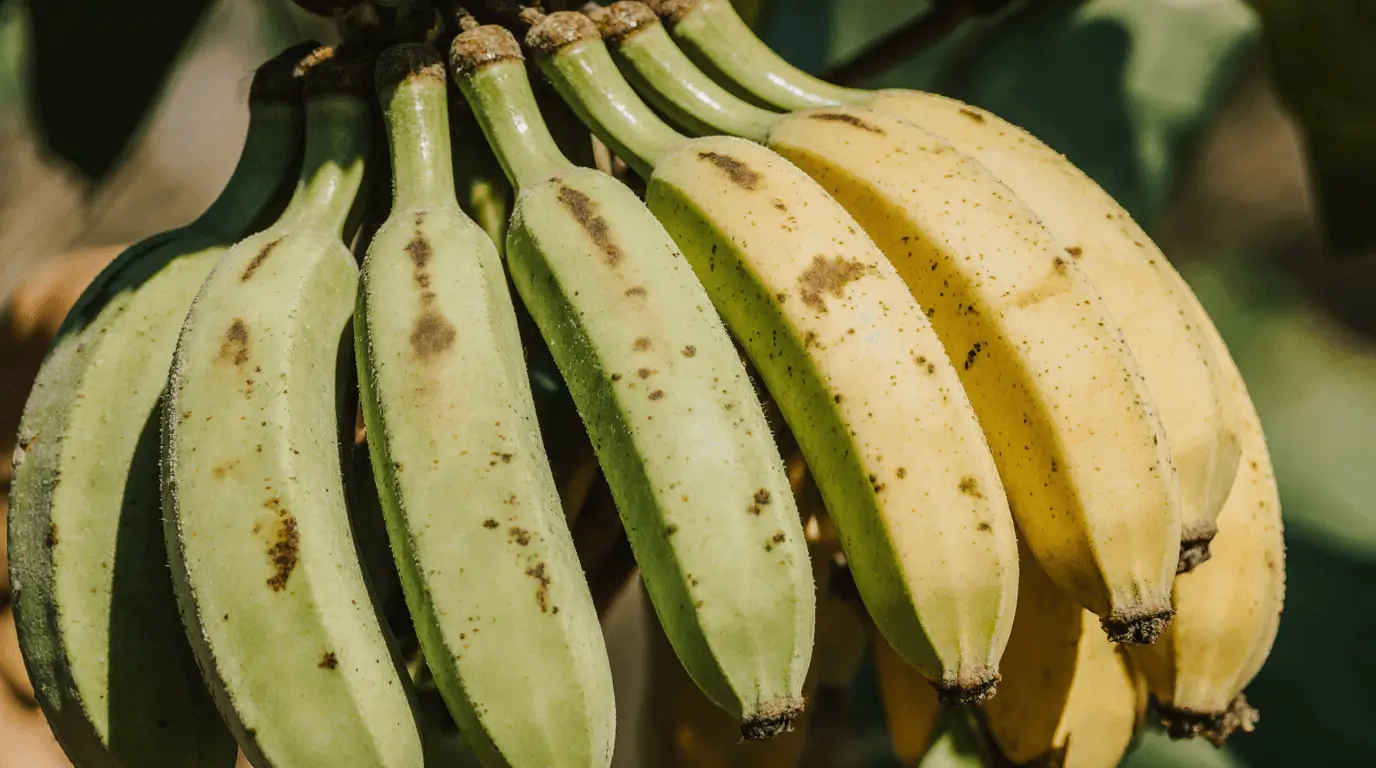
Check your clusters weekly after 75 to 180 days post-flowering, as fingers plump and point skyward when nearly ripe. Look for light green skins fading into mottled yellow, a clear signal of peak sweetness before intense spots appear.
Recognizing Pick-Ready Bunches
Use your senses to gauge when it’s time to harvest:
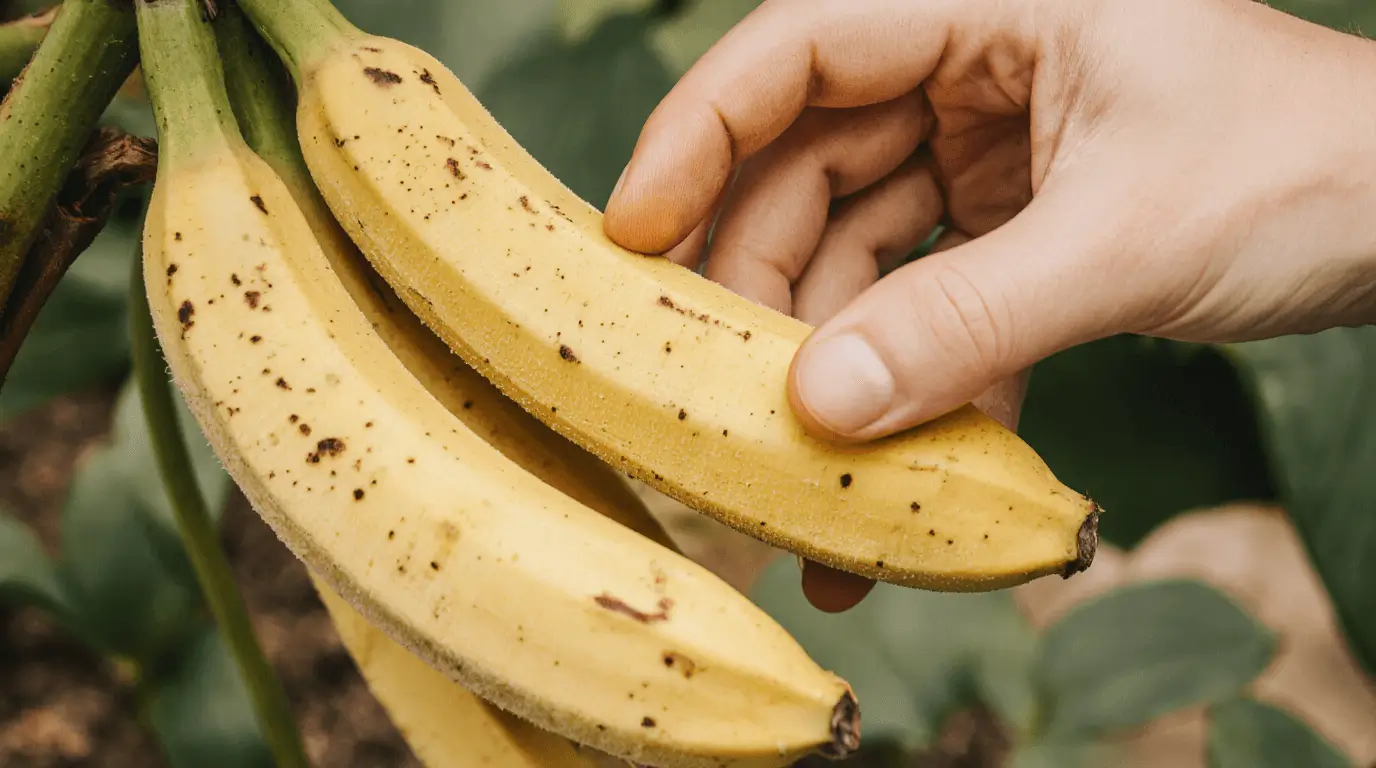
- Rounded, filled-out fingers with a gentle blushing skin.
- A sweet, fruity smell rising from the base of the cluster.
- Dark speckles that emerge across most fingers—then carefully cut with a sharp knife to avoid harming the trunk.
Read Also: Gardening & Plant Care Guide for Thriving Plants
Conclusion
Harvesting perfect bananas is a process that rewards patience and attention. From the first months after planting to the moment your bunches appear, observing ripeness cues and using your senses to recognize pick-ready bunches makes all the difference. I’ve learned that by checking clusters regularly and handling each harvest with care — using a sharp knife and avoiding harming the trunk — you can maximize flavor, sweetness, and quality in every fruit. Each season, your labor brings a fresh reminder of how nurturing nature leads to the most beloved rewards.
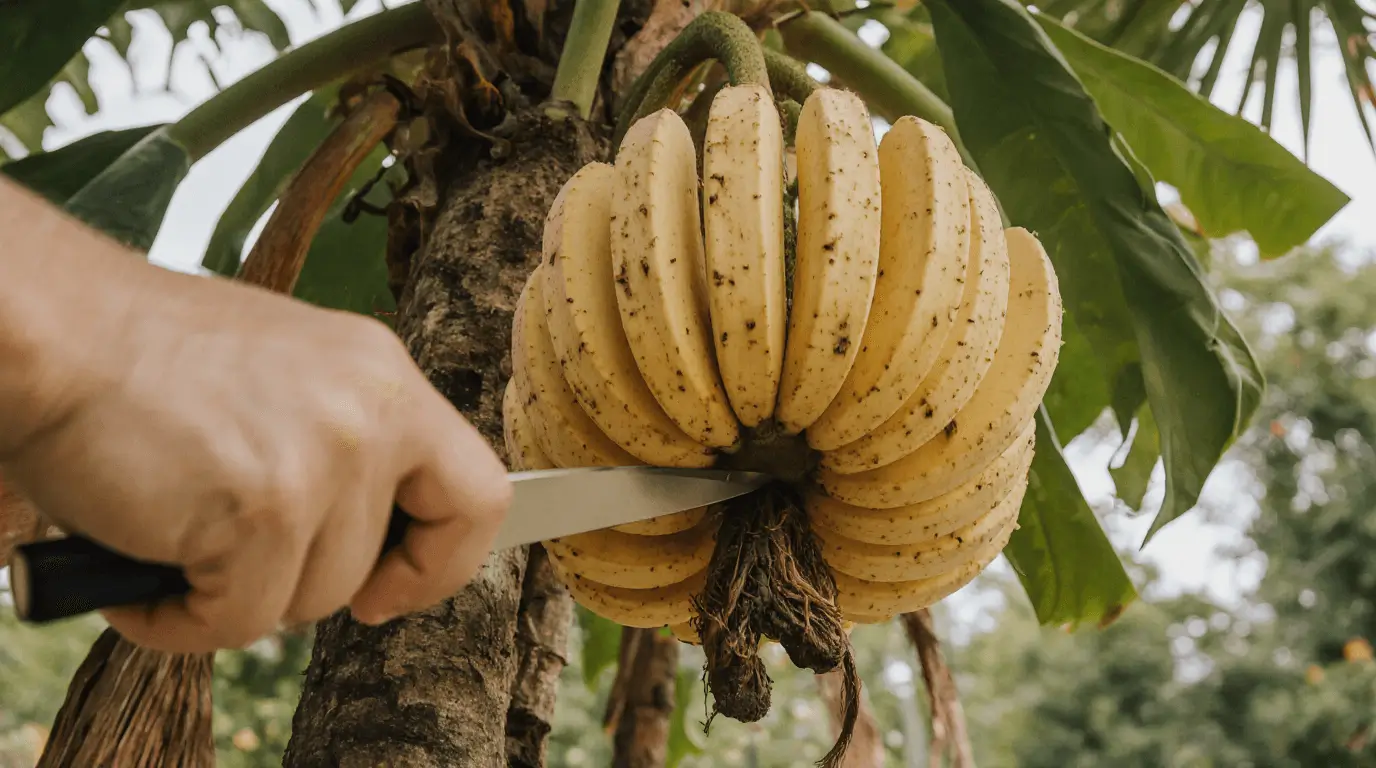
Read Also:
-
5+ Surprising Blue Java Banana Benefits You’ll Love
-
3+ Best Banana Plant Fertilizers for Faster Growth
-
5 Surprising Secrets Hidden Inside Blue Java Bananas
-
7 Surprising Facts: Do Dwarf Banana Trees Produce Fruit?
FAQs
- How long does it take for bananas to mature after planting?
It usually takes 75 to 180 days post-flowering, depending on the variety and growing conditions in your area. - What color should bananas be before harvesting?
The skins should turn from light green to mottled yellow, showing signs of peak sweetness without too many dark speckles. - How do I prevent fruit flies and damage before harvest?
You can enclose unripe bananas in plastic sleeves to avoid fruit flies and protect them until they’re ready for cutting. - What’s the best way to cut banana clusters?
Use a sharp knife to carefully cut the clusters, ensuring you don’t harm the trunk or the young trees that will produce next season. - Can I harvest bananas early?
Yes, you can pick them slightly unripe and let them ripen indoors at room temperature. However, waiting until they fill and plump ensures the richest sweetness and flavor.

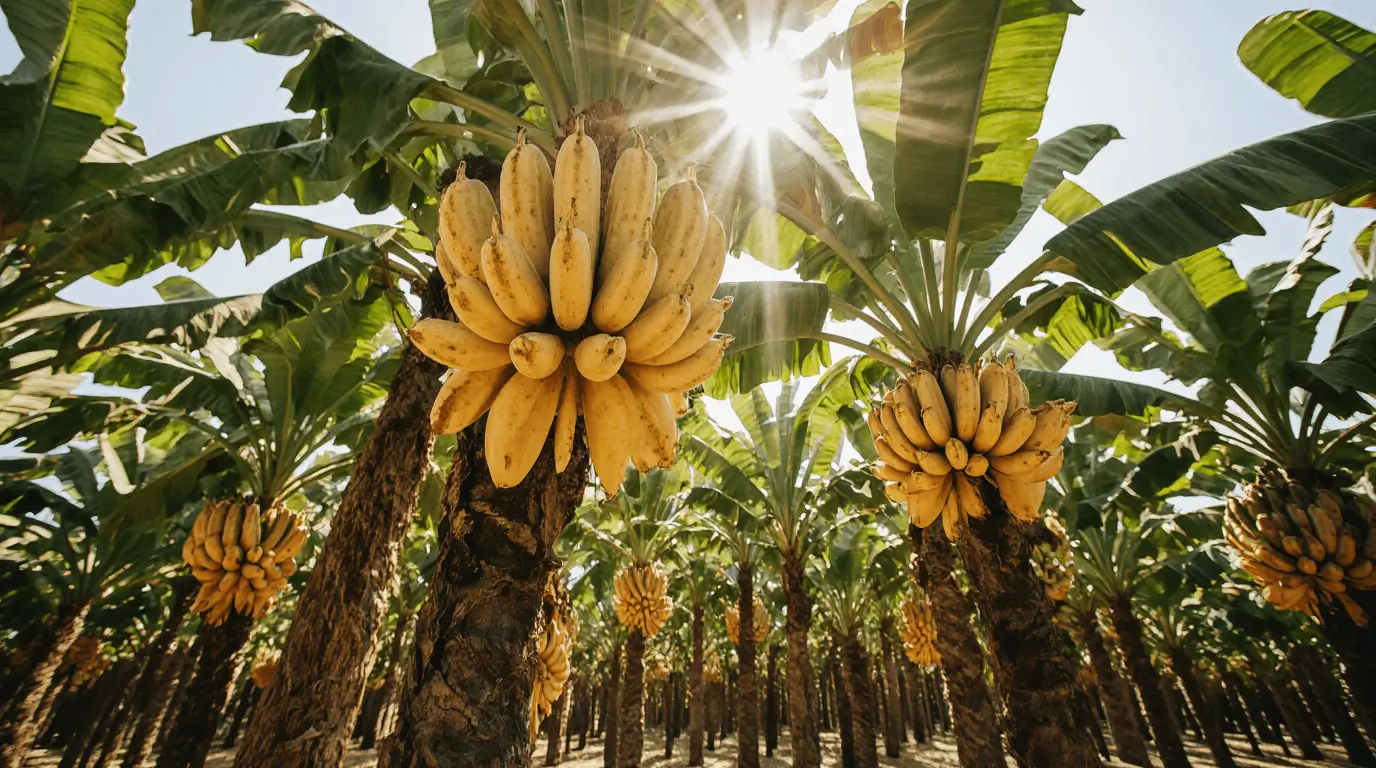
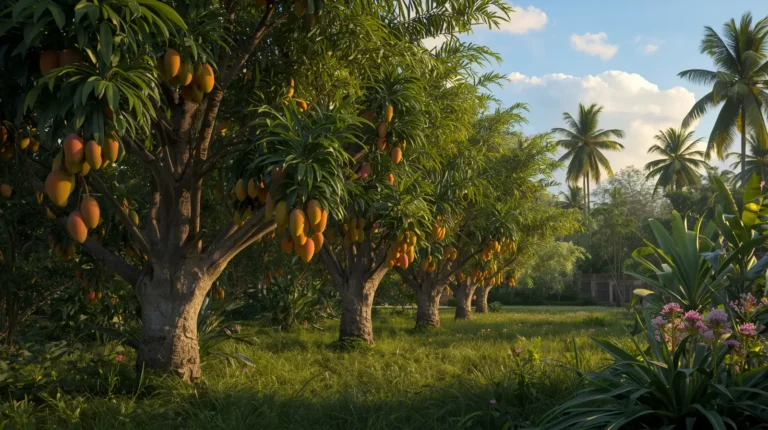
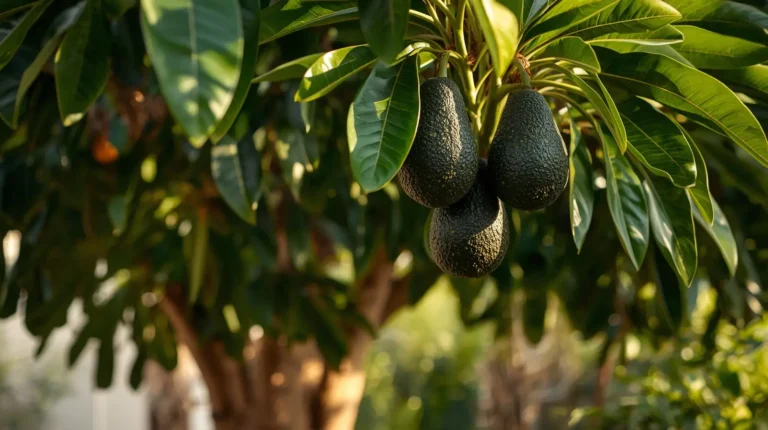

[…] 7 Secrets to Growing a Thriving Banana Tree in Florida […]
[…] 7 Secrets to Growing a Thriving Banana Tree in Florida […]